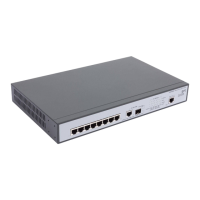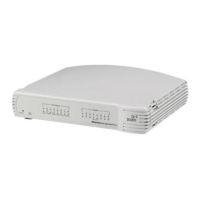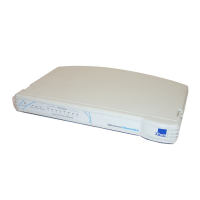157
reconfigure when the interface changes state, and also overcomes
other STA-related timeout problems.
■ State — Displays the current STA state of a port. If enabled, the port
state determines what action is taken on traffic. Possible port states
are:
■ Learning — Indicates that the port is in Learning mode. The port
cannot forward traffic, however it can learn new MAC addresses.
■ Forwarding — Indicates that the port is in Forwarding mode. The
port can forward traffic and learn new MAC addresses.
■ Discarding — Indicates that the port is in Discarding mode. The
port is listening to BPDUs, and discards any other frames it receives.
■ Link Type — Indicates the established link type. The possible field
values are:
■ Auto — Automatically derived from the duplex mode setting. Ports
set to full duplex mode are considered Point-to-Point port links,
while ports set to half-duplex mode are assumed to be on a shared
link.
■ Point to Point — Indicates that a point-to-point link is currently
established on the port.
■ Shared — Indicates that a shared link is currently established on
the port.
■ Port Priority — Indicates the priority value of the port. The priority
influences the port choice when a bridge has two ports connected in a
loop. If the path cost for all ports on a switch is the same, the port
with the highest priority will be configured as an active link in the
Spanning Tree. This makes a port with higher priority less likely to be
blocked if the Spanning Tree Algorithm is detecting network loops.

